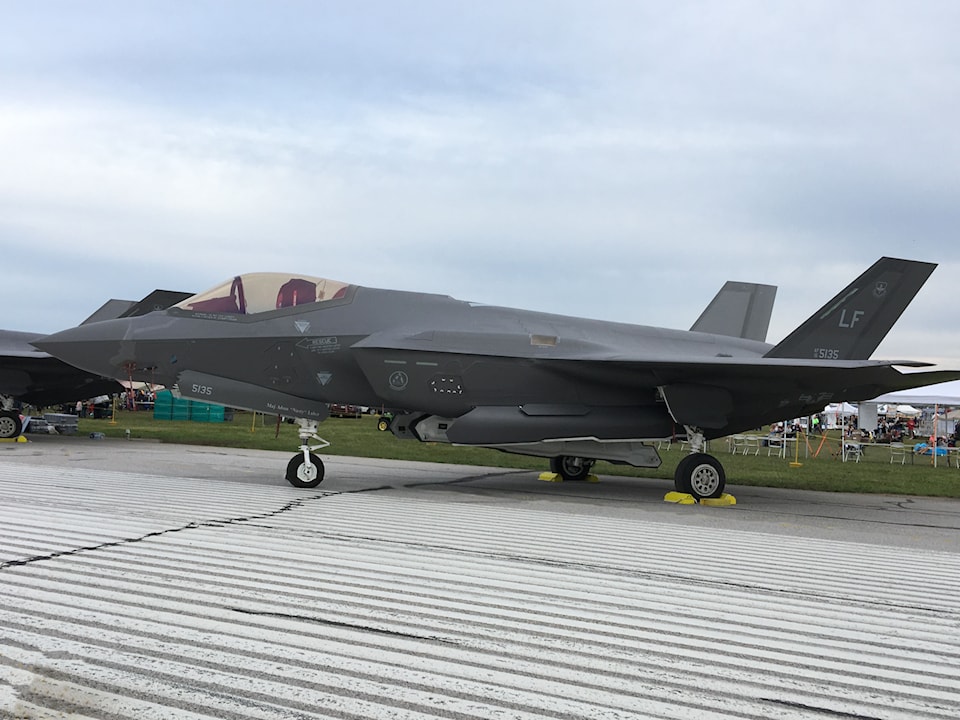The Lockheed Martin F-35 Lightning II is a multi-role, stealth, single-engine fighter jet that is now one of the most advanced pieces of military technology the world has ever seen.
In a joint project called the “JSF program” starting in 1995 between the United States and other allied countries, this fighter presumably would be an affordable, yet most state-of-the-art aircraft in the modern day.
But these technological innovations can come many problems, as for the third time in less than a year, the fifth generation fighter had crashed during a training exercise at Eielson Air Force Base in Alaska.
The aircraft was in the process of preparing for landing when an unexpected in-flight emergency occurred, prompting the pilot to eject from the jet before impact.
In a media conference, Col. Paul Townsend, commander of the 354th Fighter Wing said they are still unaware of the cause of the crash.
“The pilot was executing standard procedures and executing their respective mission and essentially experienced an in-flight malfunction that was able to safely eject but resulted in the crash of the aircraft,” Townsend said.
Although these complications may appear to be exclusively a concern within the United States, Canada could have bigger implications for this than some people might think.
The Canadian government recently purchased 88 of the F-35A Block 4 models in January 2023, with the first four aircraft arriving next year in 2026 and the final shipment expected for 2032 without the inclusion of any delays.
Canada has spent nearly $74 billion to eventually replace the in-service Royal Canadian Air Force's CF-18 Hornets, which is a dual-engine jet. They are now more than 40 years old.
Anita Anand, the former Minister of National Defence of Canada, who currently serves as transport minister, said the F-35 is the most complete plane Canada could purchase.
“The F-35 is a modern, reliable and agile fighter aircraft used by our closest allies in missions across the globe,” she said.
“It is the most advanced fighter on the market and it is the right aircraft for our country,” Anand said when announcing the purchase of the jet in 2023.
It was overdue for Canada to finally update their military power but transitioning from a dual to a single-engine jet could potentially cause problems for the long haul.
Cold weather has been a recurring theme when it comes to F-35 issues in places such as Alaska and the Arctic, where Canadian fighter jets tend to fly consistently.
In 2018, cold air penetrated the F-35’s systems during landing overwhelming battery heaters and triggering false alarms which led to many emergency landings.
Lockheed Martin claimed to have fixed the issues by updating the software to ignore the cold’s effects, but with temperatures at Eielson dipping under -34 C last Tuesday, the problem of the cold could be back to haunt the single-engine future Canadian fighter.
A major reason Canada decided to purchase the McDonnell Douglas, now Boeing CF-18 Hornet, in 1982 is because it had two engines, which were deemed crucial for ensuring reliability.
The CF-18 was reliable especially in the Arctic and over long-distance water patrols.
If one engine were to malfunction, the pilot would still have the ability to salvage the plane with an extra engine to spare but with the F-35, this is no longer an option.
The Canadian government has not always been on the F-35 bandwagon, as during the 2015 elections, Prime Minister Justin Trudeau said he promised not to purchase the fifth-generation fighter as it was not needed.
“The new Liberal government won't buy the overpriced F-35 stealth fighter jet,” Trudeau said. “A stealth fighter that can't defend our Arctic, a stealth fighter that's not actually stealth.”
Trudeau originally planned to purchase a more affordable fighter that would still be able to be reliable for the Canadian Air Force such as the Boeing F/A-18E/F Super Hornet which is an upgraded version of the CF-18 that Canada flies now.
Buying a lower-cost jet would’ve helped Canada allocate money to other divisions in the military such as the navy.
Nearly eight years later, Trudeau and the Liberal party had taken a U-turn purchasing more F-35s than originally expected at 65 in 2010 under the Harper administration.
One of the reasons for the turnaround is Canada had been a key contributor to the Joint Strike Fighter program starting in 1997 under the former Liberal government of Jean Chrétien.
For almost 24 years, Canada has invested more than $600 million in the JSF program so it would only make sense for the country to give in on the idea of a huge purchase of the jet.
Time will only tell if the inconsistent ability of the Lockheed Martin F-35 Lighting ll will be able to cover the country's skies and protect our Arctic frontier for years to come.




